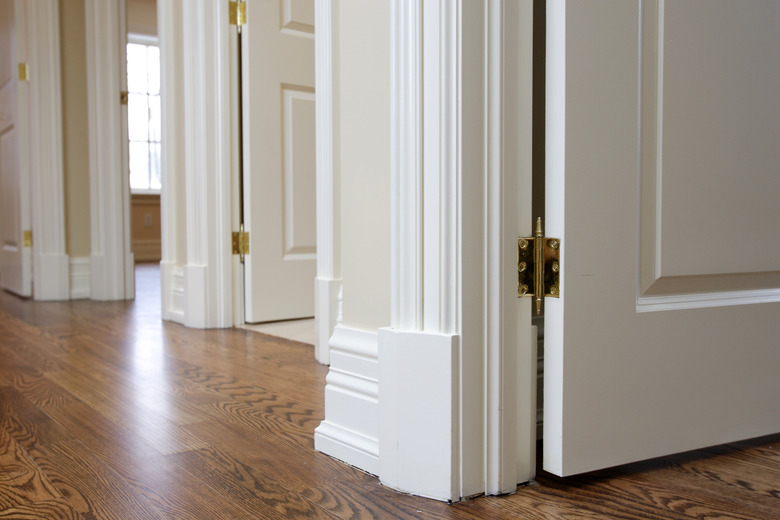How To Install Self-Adhesive Vinyl Baseboards
Self-stick vinyl wall base offers a convenient alternative to types of baseboard that require separate adhesives or nails. Unlike wood baseboard, stick-on baseboard requires a wall surface that's completely clean and free from dust, otherwise the vinyl adhesive may fail. Plan the layout before removing the paper covering the adhesive, as the wall base cannot be repositioned once it's on the wall.
Planning for Baseboard Installation
Planning for Baseboard Installation
Vinyl baseboard is sold on rolls, so measure the length of each wall earmarked for installation. One roll usually covers at least 20 feet — so at most, two full wall lengths in a typical room. Purchase rolls of stick-on baseboard in the same height and color. Make sure you'll have enough to add baseboard to each project wall, plus a couple inches extra.
Once you've brought the baseboard indoors, unroll it on the floor and let it rest for at least 24 hours at room temperature until it's completely flat against the floor. This acclimates the vinyl and helps ensure it installs snugly against the wall.
Prepping the Walls for Baseboard
Prepping the Walls for Baseboard
The wall surface must be completely clean, smooth and dry in order for the wall base to stick. Wipe the lower area of the walls down with a dust cloth first to remove dust particles. Afterwards, wipe the walls with a damp rag. If any nails protrude, either pull them out with the claw end of a hammer or tap them in, flush with the wall.
Wipe away greasy film or tacky substances using a citrus-based goo remover, such as those used to remove tape residue.
Stick-On Baseboard Instructions
Stick-On Baseboard Instructions
With stick-on baseboard, the goal is to wrap the vinyl strip along more than one wall with as few seams as possible. Hold the unrolled vinyl baseboard up against one of the walls, choosing an arbitrary starting point. Mark a line at this point on the wall. Don't remove the vinyl's backing paper. Hold the vinyl with the toe end, which sticks out a little, touching the floor. The paper backing should face the wall.
Use a pencil to mark the inside and outside corners for the vinyl, as well as any areas you may need to cut once you've wrapped the room with baseboard trim. For straight areas, peel away several feet of backing at a time, then press the vinyl against the wall, ensuring the toe is against the ground in all places. Smooth the vinyl in place with pressure from your hand; use a small wood block or tool handle to press the toe area firmly in place. Don't rub the tool or wood over any part the trim, as this may mar the finish.
Continue peeling backing paper away as you install the trim. As you approach inside and outside corners, do not peel the backing paper away yet. These sections require special attention.
Corner Cuts and Notches
Corner Cuts and Notches
Since the vinyl wraps from one wall to another, cuts and gouges must be made to ensure a snug fit against the walls. For an inside corner, use a utility knife to make a triangular notch, point end up, in just the toe area where one wall meets the next. The notch makes it easier to bend the trim into the corner. Bend the vinyl to fit the corner, trimming more of the toe as needed. Once happy with the results, peel the backing paper away and press the vinyl against the wall.
For outside corners, score the back edge of the vinyl vertically, cutting through the backing paper, exactly where the vinyl meets the corner of the wall. Bend the backwards along this score just a little, then shave a very thin amount of vinyl away from the entire score mark. This helps the vinyl fit around the corner more easily.
Remove the backing paper from the surrounding vinyl and smooth the vinyl against the wall. If you have more baseboard material than you need, make vertical cuts with a utility knife and a square, ensuring the cut stays straight. When finished, smooth the entire vinyl surface down by rubbing it with a soft cloth.
